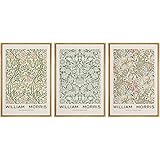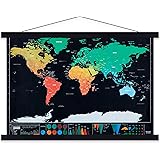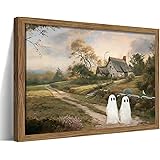The kitchen, often hailed as the true heart of any home, effortlessly blends functionality with aesthetic appeal, fostering a space that is both warm and inviting. It’s a stage for culinary creations, family gatherings, and quiet morning coffees, meaning its design significantly impacts daily life. As you explore the captivating world of interior aesthetics in the video above, remember that choosing the right kitchen design styles can truly transform your house into a personalized sanctuary.
Whether you’re embarking on a full-scale kitchen renovation or simply seeking to inject fresh life into your current space, the myriad of design choices can feel overwhelming. However, by understanding the foundational characteristics of popular kitchen styles, you can make informed decisions that resonate with your personal taste and lifestyle. This comprehensive guide serves as a written companion to the visual insights, offering deeper dives into each style and helping you visualize your dream culinary haven.
Embrace the Future: Modern Kitchen Design
Modern kitchen design stands as a testament to the adage “less is more,” championing sleek lines, unadorned surfaces, and cutting-edge technology. This style isn’t merely about contemporary trends; it’s a philosophy focused on efficiency and streamlined living, much like a well-oiled machine operating with quiet precision. Characterized by flat-panel cabinetry and a predominantly monochromatic color palette, modern kitchens radiate an air of sophisticated simplicity, making them incredibly appealing to those who appreciate order and visual calm.
The core of a modern kitchen lies in its commitment to a clutter-free environment, often achieved through ingenious hidden storage solutions and seamlessly integrated appliances. Imagine a kitchen where your dishwasher vanishes into the cabinetry, or your refrigerator blends invisibly with the walls, much like a discreet butler ensuring every need is met without a visible presence. Materials such as stainless steel, glass, and natural stone are not just chosen for their aesthetic prowess but also for their durability and ease of maintenance, reflecting the practical elegance inherent in this design. Furthermore, strategic lighting — from under-cabinet LED strips to sculptural pendant lights over islands — plays a crucial role, enhancing both form and function by washing the space in ample, well-distributed illumination.
Beyond the Basics of Modern Kitchens
To truly master the modern aesthetic, one must look beyond superficial elements and embrace the essence of purposeful design. Consider how smart home technology can elevate your kitchen from merely functional to remarkably intuitive, with voice-activated lighting or app-controlled ovens becoming extensions of your will. Incorporating smart storage solutions, such as pull-out pantries and vertical dividers for baking sheets, helps maintain that coveted uncluttered look, ensuring every item has its designated, often concealed, home. While minimalism is key, don’t shy away from introducing a singular, unexpected element, like a vibrant glass backsplash or a sculptural light fixture, which acts as a focal point without disrupting the harmonious balance, much like a single, striking brushstroke on a pristine canvas.
The Dramatic Statement: Black Kitchens
Black kitchens have dramatically surged in popularity, offering an aesthetic that is both bold and undeniably luxurious, much like a finely tailored suit exudes understated power. This striking design choice creates an immediate sense of drama and sophistication, perfect for homeowners who desire to make a strong visual statement. Utilizing black cabinets, countertops, or appliances as a base, this style encourages daring contrasts, often pairing dark elements with pristine white walls or gleaming metallic accents to prevent the space from feeling too enclosed.
The allure of matt black finishes is particularly strong in current trends, presenting a soft, velvety texture that masterfully absorbs light and cleverly disguises fingerprints, maintaining a pristine appearance. However, the true artistry in a successful black kitchen lies in balancing these dark elements with thoughtful lighting and varied textures. Think of it as painting with shadows and light: strategic under-cabinet lighting and task lights are vital to ensure functionality, while the infusion of natural materials like warm wood or lush green plants can introduce warmth and vitality, preventing the space from feeling stark or unwelcoming.
Crafting Depth in a Black Kitchen
To prevent a black kitchen from feeling monolithic, consider it an opportunity to explore a spectrum of textures and sheens. Pair a polished black granite countertop with a deeply textured matt black island, or introduce cabinetry with subtle wood grain visible through a dark stain, creating a tactile richness that invites touch. Imagine contrasting the depth of black with the unexpected glimmer of brass hardware or the raw appeal of a concrete floor, much like different musical instruments contributing to a complex symphony. Moreover, embracing elements such as open shelving with minimalist decor or even a strategically placed mirror can trick the eye, reflecting light and making the space feel more expansive and inviting.
Timeless Comfort: Farmhouse Kitchen Design
Farmhouse kitchen design masterfully marries rustic charm with contemporary functionality, crafting a space that radiates warmth and hospitality, much like a beloved vintage quilt wraps you in comfort. This style inherently feels like the true heart of the home, drawing upon natural materials, cherished vintage accents, and an overarching focus on ease and comfort. Key design signatures include the iconic apron-front sink, open shelving displaying curated collections, and a harmonious blend of diverse wood tones that evoke a sense of history and honest craftsmanship.
The color palettes typically found in farmhouse kitchens lean towards warm neutrals, featuring creamy whites, soft grays, and muted earth tones, all conspiring to create an inviting and tranquil atmosphere. To truly amplify the farmhouse aesthetic, consider a rich interplay of textures: imagine the smooth coolness of a marble countertop juxtaposed with rough-hewn wooden shelves, or the sleekness of modern stainless-steel appliances set against a charming vintage-inspired range hood. This thoughtful mixing adds layers of visual interest and tactile pleasure, much like different threads woven together create a rich tapestry.
Evolving the Farmhouse Aesthetic
While tradition is a cornerstone, the modern farmhouse style isn’t afraid to evolve, embracing unique blends that speak to contemporary living. Don’t hesitate to incorporate a contemporary light fixture or a minimalist bar stool alongside more traditional elements; this juxtaposition often creates a dynamic and personalized space, much like finding a modern novel on a dusty antique bookshelf. Adding a cozy seating area, such as a built-in banquette or a quaint breakfast nook, further reinforces the welcoming nature of the farmhouse style, actively encouraging family gatherings and heartfelt conversations around the kitchen table.
Raw Elegance: Industrial Kitchen Design
Industrial kitchen design draws its potent inspiration from the utilitarian grandeur of warehouse and factory spaces, resulting in a raw, edgy aesthetic that is both profoundly functional and strikingly stylish. This design approach celebrates exposed elements and robust materials, much like an artist might intentionally leave pencil marks visible to convey the creative process. Characterized by the prominent use of materials such as metal, concrete, and reclaimed wood, industrial kitchens tell a story of durability and repurposed beauty.
A hallmark of this style is the deliberate exposure of structural and mechanical elements—think visible pipes, ducting, and robust beams—which are left unconcealed not as flaws, but as integral components contributing to the authentic industrial feel. The color palettes lean towards a neutral spectrum, with varying shades of gray, deep blacks, and earthy browns dominating the expanse. However, strategic pops of vibrant color can be introduced through accent pieces or statement appliances, injecting vitality into the otherwise subdued canvas. Moreover, the industrial style embraces imperfections, where distressed finishes and weathered materials add a layer of history and character, much like aged leather gains charm with every crease.
Balancing Grit and Grace in Industrial Kitchens
To soften the inherent austerity of an industrial kitchen, introducing organic elements is crucial. Consider placing potted herbs along a window ledge or installing a living vertical garden wall, much like a verdant oasis emerging from a concrete jungle. Lighting fixtures in industrial spaces often double as focal points, with oversized pendant lights featuring exposed bulbs or metal cage designs, not only illuminating the space but also reinforcing the raw, utilitarian theme. Furthermore, incorporating vintage or salvaged items, such as old factory stools for island seating or repurposed industrial carts as mobile storage units, imbues the kitchen with a unique narrative and an undeniable sense of authenticity.
Coastal Charms: Mediterranean Kitchen Design
Mediterranean kitchen design effortlessly captures the sun-drenched warmth and vibrant spirit of coastal European living, creating a space that feels like a permanent vacation. This enchanting style is defined by rich, earthy colors, exquisitely ornate details, and a harmonious blend of both rustic and refined elements, much like a mosaic artist carefully places diverse tiles to form a cohesive, beautiful image. Natural materials, including robust stone and warm wood, are prominently featured, adding both texture and an organic depth that grounds the entire design.
Imagine walls adorned in terracotta hues or azure blues, complemented by hand-painted ceramic tiles that tell tales of ancient artistry, often acting as vibrant backsplashes or intricate floor patterns. Architectural details such as graceful arches or exposed wooden ceiling beams further enhance the authentic Mediterranean feel, inviting a sense of timeless elegance. Mediterranean kitchens often prioritize elements that encourage communal gatherings, such as expansive islands or inviting built-in banquettes, directly reflecting the profound importance of food, family, and shared moments in Mediterranean culture. This emphasis on togetherness makes the kitchen a true hub for celebration, much like a bustling village square.
Infusing Mediterranean Soul into Your Kitchen
To cultivate an authentic Mediterranean atmosphere, focus on creating a sensory experience that transcends mere aesthetics. Pair elaborately tiled floors with simple, white-washed walls to allow the craftsmanship to shine, or offset a detailed wrought-iron light fixture with clean-lined, rustic cabinetry. Incorporating decorative elements like ceramic pottery, woven baskets, or even a citrus tree in a terracotta pot will add layers of authentic charm. Furthermore, robust, solid wood furniture and an abundance of natural light are key, ensuring the space feels both substantial and airy, like stepping into a sun-drenched villa overlooking the sea.
Light & Logic: Scandinavian Kitchen Design
Scandinavian kitchen design embodies a philosophy centered on simplicity, unparalleled functionality, and a profound connection to the natural world, much like a crisp winter morning brings clarity and freshness. This celebrated style is characterized by its clean lines, an abundance of light wood tones, and a predominantly white or light gray color palette, all meticulously chosen to maximize the feeling of openness and luminosity within the space. It prioritizes practical living and impeccable organization, featuring ingenious storage solutions that steadfastly maintain a coveted clutter-free environment.
The essence of Scandinavian design, often rooted in concepts like ‘Hygge’ (coziness) and ‘Lagom’ (just enough), dictates that every element must serve a purpose while contributing to an atmosphere of calm and well-being. To infuse warmth into this inherently minimalist aesthetic, introduce rich textures through natural materials like woven jute rugs, handcrafted wooden bowls, or soft linen textiles, creating a tactile counterpoint to the smooth surfaces. Furthermore, if natural light is limited, a thoughtful combination of ambient and task lighting is employed to create a bright, inviting space that feels illuminated from within, much like a snow-covered landscape reflecting the faintest sunlight.
Mastering the Scandinavian Balance
When curating a Scandinavian kitchen, prioritize natural light by keeping window treatments minimal or opting for sheer curtains that allow maximum light filtration, acting as gentle filters rather than barriers. Don’t be afraid to experiment with striking black accents in hardware, faucet fixtures, or even a singular light pendant; these elements create a sophisticated contrast against the predominantly light palette, adding depth and a subtle edge without sacrificing simplicity. The intelligent use of light-colored woods such as birch, ash, or pale oak for cabinetry and flooring is paramount, as these materials naturally amplify the sense of airiness and connect the interior to the serene beauty of Nordic landscapes.
Romantic Revival: Shabby Chic Kitchen Design
Shabby Chic kitchen design orchestrates a beautiful harmony between vintage charm and a soft, decidedly romantic aesthetic, much like an antique lace doily delicately placed on a rustic wooden table. This endearing style is instantly recognizable by its predominantly white or pastel color palette, intentionally distressed finishes, and an eclectic yet curated mix of furniture and delightful accessories. It’s a celebration of imperfection, history, and nostalgic elegance, creating a kitchen that feels both lived-in and dreamily picturesque.
Key elements include beautifully painted wooden cabinets with a lovingly weathered or ‘shabby’ appearance, often achieved through gentle sanding or glazing to reveal layers of color beneath, suggesting years of cherished use. Vintage or antique fixtures, such as ornate chandeliers or classic bridge faucets, add touches of bygone glamour. Open shelving frequently displays charming collections of mismatched china, delicate glassware, or well-loved cookbooks, each item contributing to the narrative of the space. Soft textiles, like flowing lace curtains or cushions adorned with subtle floral prints, further enhance the romantic and inviting atmosphere, much like a soft focus lens adds a dreamy quality to a photograph.
Curating Your Shabby Chic Sanctuary
The beauty of a Shabby Chic kitchen lies in its adaptability; it allows for easy updates by simply swapping out accessories without necessitating a major renovation, much like changing the blooms in a vase refreshes an entire room. To maintain a cohesive yet eclectic look, establish a consistent color palette for larger elements such as cabinets and walls, then introduce pops of complementary color through smaller decor items like antique teacups, patterned dishtowels, or fresh flower arrangements. Embracing upcycled furniture, like a vintage dresser repurposed as an island or a distressed hutch displaying cherished heirlooms, not only adds character but also champions sustainable design, infusing the space with stories and unique personality.











